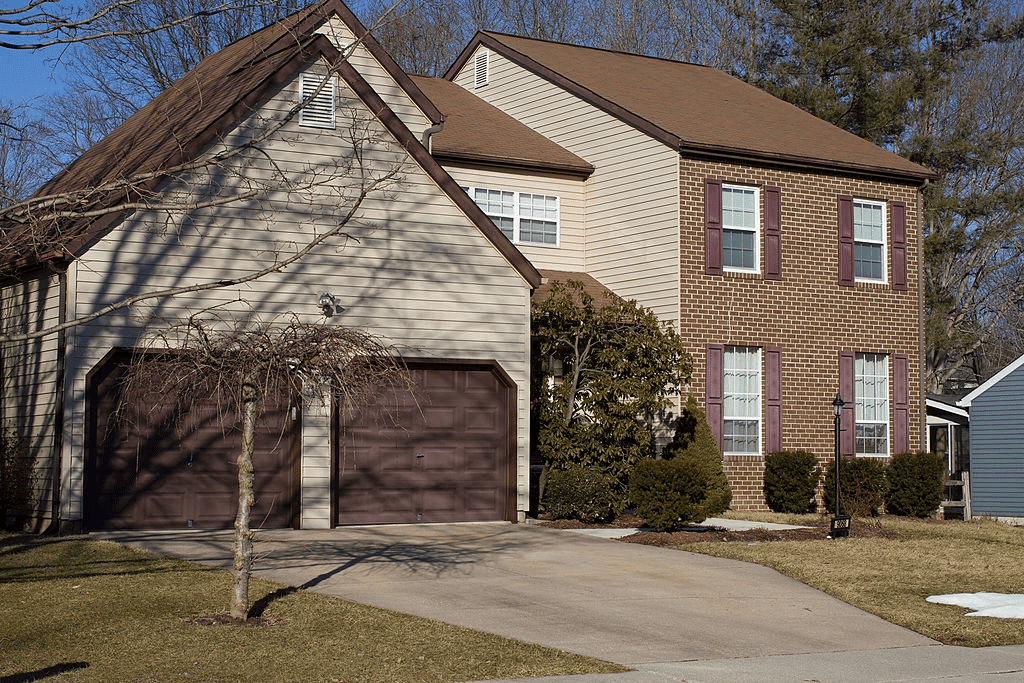Hardie Board Siding: Advantages, Disadvantages, Cost
Hardie board siding was created by Hardie James Building company and are horizontal lap siding about 0.312 inches in thickness. They are also called cement-fiber, fiber cement cladding, and concrete siding, and have been in use for a very long time.

The fiber cement manufacturing process involves mixing pulverized sand, cement, and wood pulp with water. The mixture is stirred into a slurry, which is then rolled out and pressed into sheets. The water is then squeezed out of the slurry, a pattern is pressed onto the surface, and the sheets cut into boards.
Once Hardie boards are cut out, they are sweltered in autoclaves under high-pressure steam before they are pushed apart, tested for strength, and painted. The Hardie board may look like wood once finished. However, they are much heavier with more properties of cement than wood. The wood fiber that is added is meant to give the board flexibility so as to prevent it from cracking.
However manufactured with good qualities, physical strength, and texture, Hardie boards have a few disadvantages too. Some of the notable advantages and disadvantages of the siding material have been discussed below.
Advantages
- Appearance. No homeowner wants to be associated with a colourless non-attractive home structure. The attractive looks and appearances you need can be provided by the famous Hardie Board siding. It can be made to simulate any other siding material such as wood lap boards, cedar shingles, and wood shake siding, which makes your home even more natural. There are also numerous colour options, which are usually accompanied by a 15-year warranty on the finish.
- Fire resistance. Hardie board siding is 90 percent sand and cement. This makes it fire resistant and the reason why Hardie Boards have been very common in Australia and other arid states where wildfires are common.
- Storm resistance. Heavy storms are known to leave many people homeless when they rage through homes build on less enduring materials. Hardie board siding is a proven commodity in the weather department and is known to be highly resistant to storms. You need this type of siding for your home protection in case you live in a storm-prone area.
- Longevity. Hardie board is rot and insect resistant and can last many years before it is ruined. Once installed and painted, the material requires very little maintenance. However, it is worth noting that the thicker, denser fiber cement products are highly resistant to impact, while the thinner, less dense products will call for protection.
Disadvantages
- The material is expensive. This is due to the combined cost of materials such as cement, sand, and cellulose fibers, which is appreciably high. However, the material is less expensive than wood and brick.
- High installation and labour costs. As a result of its composition, it requires more planning, a large labour force, and may take longer to install. It is worth noting that fiber cement cladding is very heavy. The thin Hardie Boards are fragile before installation and must be carefully handled as they are prone to chipping and breakage.
- Maintaining fiber cement siding is a huge task that takes up a lot of time and money. Whether your Hardie siding is pre-painted or not, it will demand periodic repainting in order to maintain its looks because the paint fades and can sometimes chip. The product also gets dirty faster and will require regular cleaning.
- Proper ventilation must be provided, and caution taken in places where fiber cement siding is being expurgated as long-term exposure to the silica dust produced during installation may cause a disease known as silicosis together with other lung diseases among workers.
- Cost. However, more expensive than vinyl, fiber cement siding is less expensive than wood and brick. The material is, on the other hand, less expensive than composite siding and synthetic stucco. HardiePlank board runs about $0.70 to $5.25 per square foot. This could result in a guesstimate total cost of between $4,700 and $13,300, making an allowance for the amount of siding that may be required as well as the duration of installation and any additional costs for equipment and materials.